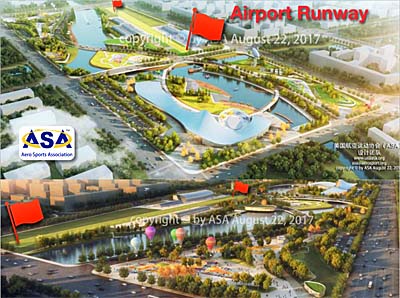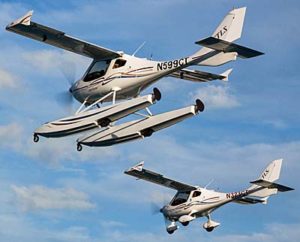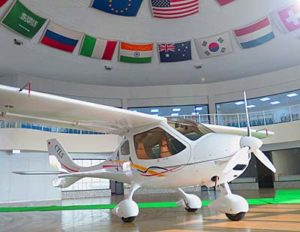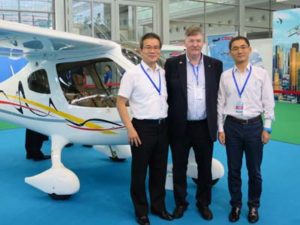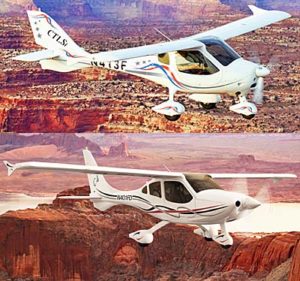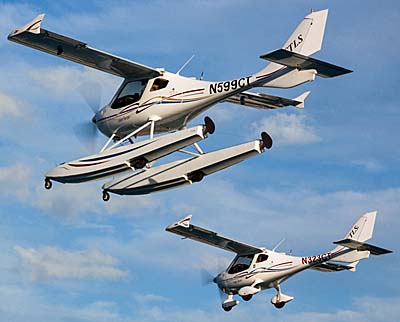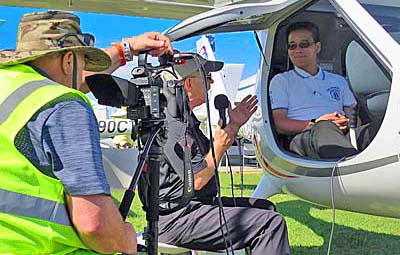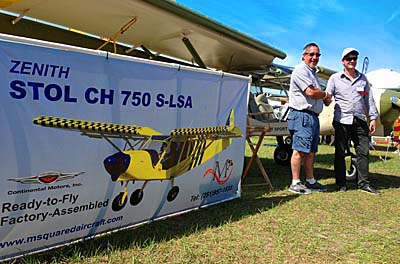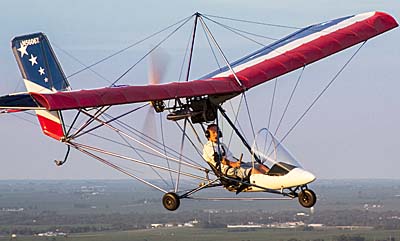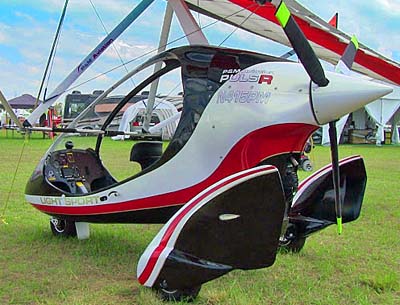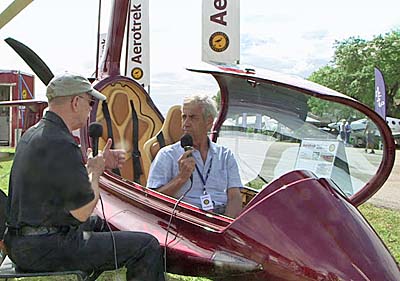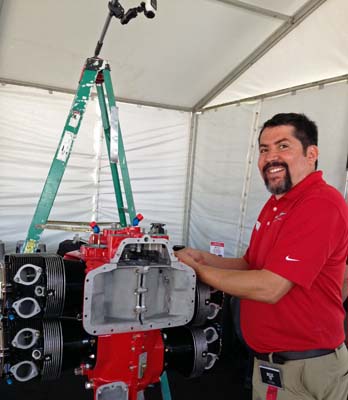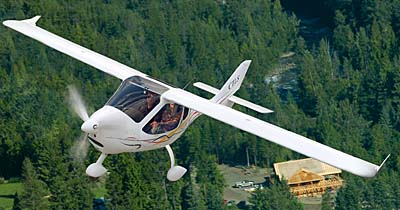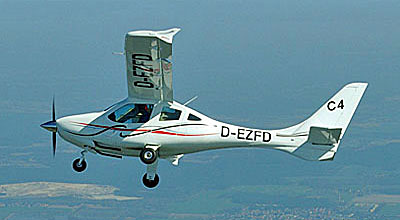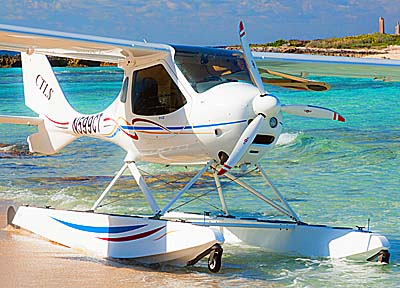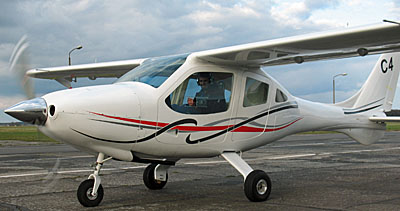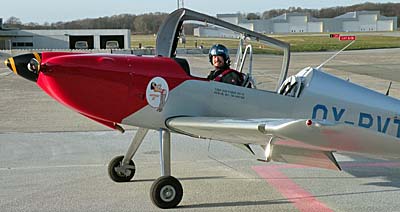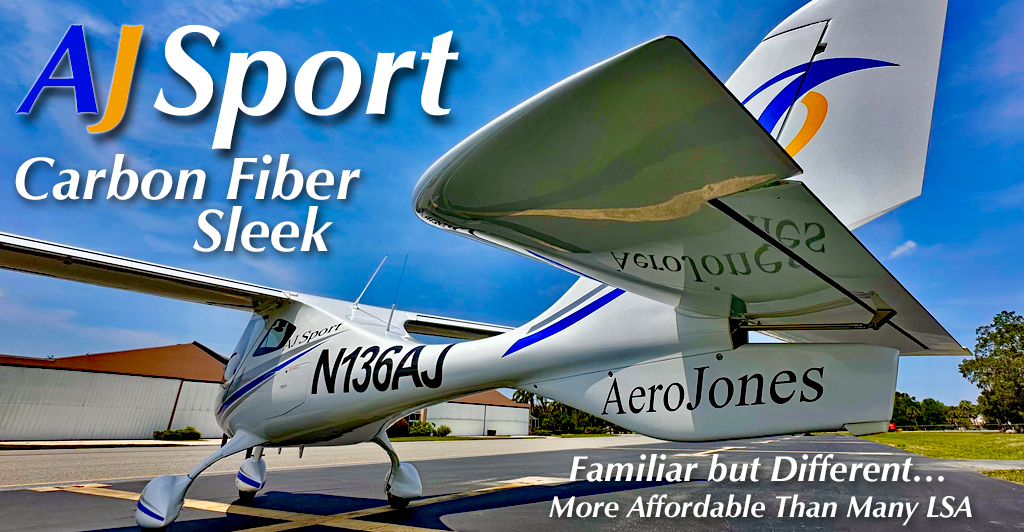
Is it because of tariffs? Another reason? Or simply a good idea? Does it matter why you’re reading about AJ Sport? U.S. government policies swing and sway the world in remarkable ways. That’s a whole story in itself, but the way aircraft suppliers respond to the situation they are facing can be instructive. To be clear, AeroJones Aviation is not reacting to tariff changes. This company, headquartered in U.S.-friendly Taiwan, has been working toward entering the American market for years. For more than a decade, AeroJones has been the officially-licensed producer of Flight Design’s CTLS and CTLSi for Asia-Pacific. They don’t simply import and sell units built in Europe. They do 100% of the fabrication, assembly, and production test flights in the Asian theater. They’ve delivered more than 50 aircraft and have won multiple CAAC airworthiness approvals. A video to follow soon features SilverLight Aviation‘s Abid Farooqui describing several notable changes the company achieved.


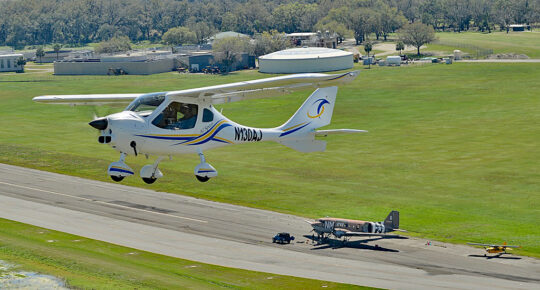 U.S. government policies swing and sway the world in remarkable ways. That's a whole story in itself, but the way aircraft suppliers respond to the situation they are facing can be instructive.
To be clear, AeroJones Aviation is not reacting to tariff changes. This company, headquartered in U.S.-friendly Taiwan, has been working toward entering the American market for years. For more than a decade, AeroJones has been the officially-licensed producer of Flight Design's CTLS and CTLSi for Asia-Pacific. They don't simply import and sell units built in Europe. They do 100% of the fabrication, assembly, and production test flights in the Asian theater. They've delivered more than 50 aircraft and have won multiple CAAC airworthiness approvals.
U.S. government policies swing and sway the world in remarkable ways. That's a whole story in itself, but the way aircraft suppliers respond to the situation they are facing can be instructive.
To be clear, AeroJones Aviation is not reacting to tariff changes. This company, headquartered in U.S.-friendly Taiwan, has been working toward entering the American market for years. For more than a decade, AeroJones has been the officially-licensed producer of Flight Design's CTLS and CTLSi for Asia-Pacific. They don't simply import and sell units built in Europe. They do 100% of the fabrication, assembly, and production test flights in the Asian theater. They've delivered more than 50 aircraft and have won multiple CAAC airworthiness approvals.
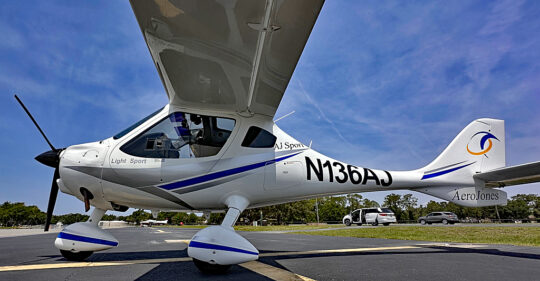 A video to follow soon features
A video to follow soon features 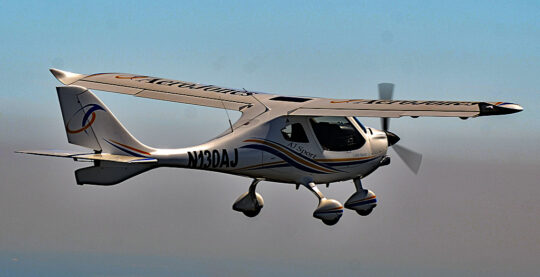 What does AeroJones USA offer of interest? Below I'll describe the sophisticated aircraft that is AJ Sport but one leading quality is a more affordable price — and yes, I know how loaded that word "affordable" is; bear with me.
What does AeroJones USA offer of interest? Below I'll describe the sophisticated aircraft that is AJ Sport but one leading quality is a more affordable price — and yes, I know how loaded that word "affordable" is; bear with me.
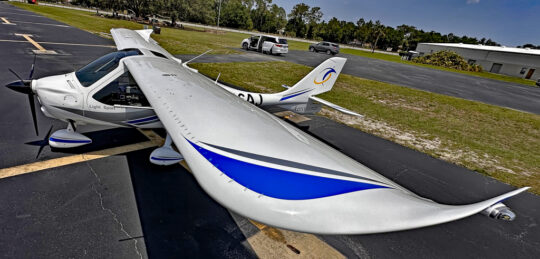 Using government reports, the U.S. inflation rate has averaged 4.89% annually for the last 20-some years, making $60,000 then similar to $180,000 today. No doubt; a dollar doesn't buy what it used to. Some readers may find the 2025 price beyond reach, yet I see AJ Sport at $179,000 as a solid value closely approximating our earlier expectations.
Come to EAA AirVenture Oshkosh 2025 and see AJ Sport's production quality for yourself. Nearly all who examine it will come away impressed.
Using government reports, the U.S. inflation rate has averaged 4.89% annually for the last 20-some years, making $60,000 then similar to $180,000 today. No doubt; a dollar doesn't buy what it used to. Some readers may find the 2025 price beyond reach, yet I see AJ Sport at $179,000 as a solid value closely approximating our earlier expectations.
Come to EAA AirVenture Oshkosh 2025 and see AJ Sport's production quality for yourself. Nearly all who examine it will come away impressed.
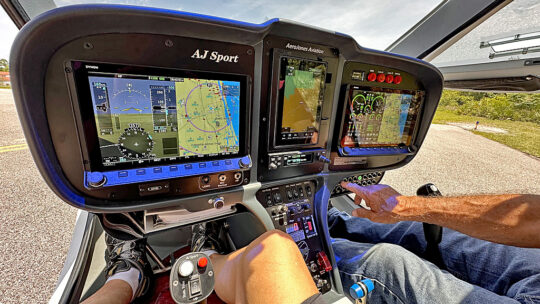 The 2025 AeroJones USA AJ Sport has most of the features and equipment even a seasoned aircraft buyer might seek.
The 2025 AeroJones USA AJ Sport has most of the features and equipment even a seasoned aircraft buyer might seek.
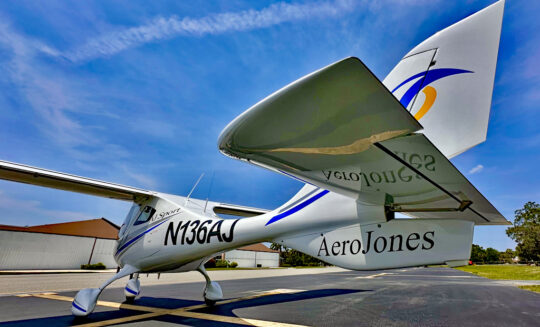 "We have a completely redesigned fuel system to reduce vapor lock, a new engine cowling for enhanced cooling, a larger wingspan with curved winglets for better slower speed handling, and VGs for lower stall speed and softer controlled landings," stated Abid. Visually, AJ Sport looks very familiar but under its smooth carbon fiber skin, these notable changes were desired but also required to meet new, ever-better ASTM standards, which all LSA must prove to gain FAA acceptance for sale in America.
"We have a completely redesigned fuel system to reduce vapor lock, a new engine cowling for enhanced cooling, a larger wingspan with curved winglets for better slower speed handling, and VGs for lower stall speed and softer controlled landings," stated Abid. Visually, AJ Sport looks very familiar but under its smooth carbon fiber skin, these notable changes were desired but also required to meet new, ever-better ASTM standards, which all LSA must prove to gain FAA acceptance for sale in America.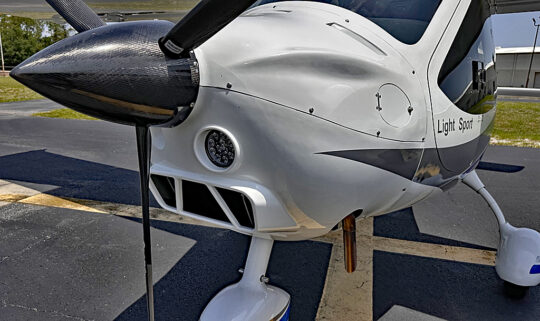 "You can cruise easily at 110 knots at 75% power," observed Abid, "or opt for maximum fuel economy at 100 knots sipping less than four gallons an hour. A 34-gallon fuel capacity provides the freedom to fly more than 825 nautical miles non-stop and still have a 30-minute reserve." AJ Sport's fuel is safely stored in the wings, away from the fuselage, providing added protection for you and a passenger.
"You can cruise easily at 110 knots at 75% power," observed Abid, "or opt for maximum fuel economy at 100 knots sipping less than four gallons an hour. A 34-gallon fuel capacity provides the freedom to fly more than 825 nautical miles non-stop and still have a 30-minute reserve." AJ Sport's fuel is safely stored in the wings, away from the fuselage, providing added protection for you and a passenger.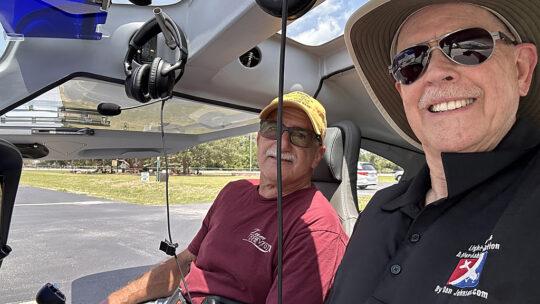
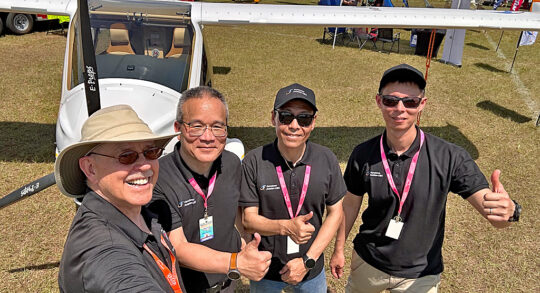
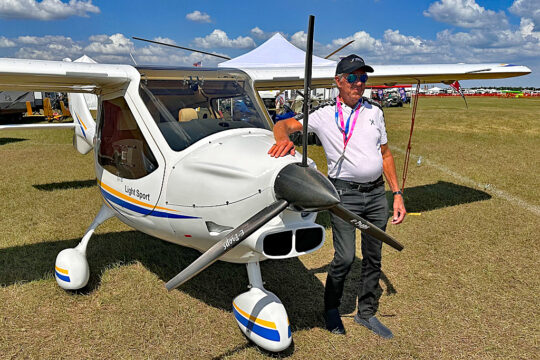
 The following month FAA's Sport Pilot / Light-Sport Aircraft regulation will celebrate its 19th birthday. That means LSA will turn 20 years old in 2024 and by the end of the year we should have Mosaic.
It has been a fast and furious twenty years!
The following month FAA's Sport Pilot / Light-Sport Aircraft regulation will celebrate its 19th birthday. That means LSA will turn 20 years old in 2024 and by the end of the year we should have Mosaic.
It has been a fast and furious twenty years!
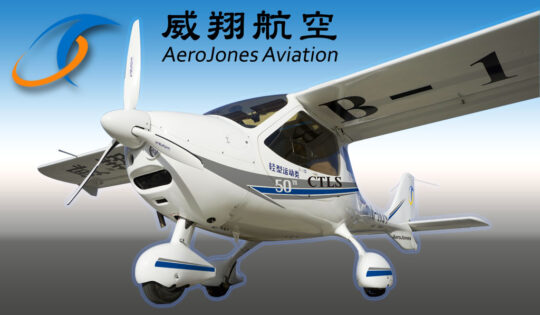 In those two decades, LSA have arrived and flown in nearly every country on Earth.
A few years ago, I evaluated total worldwide market size — see
In those two decades, LSA have arrived and flown in nearly every country on Earth.
A few years ago, I evaluated total worldwide market size — see 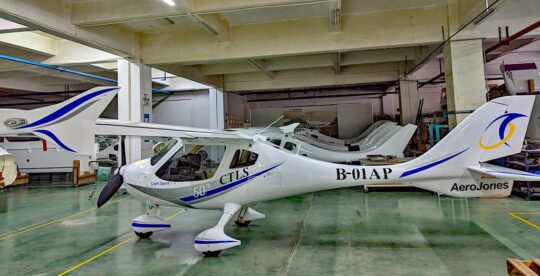 We know Chinese money is invested in (or wholly owns) many of general aviation's top brands, including Cirrus Design, Continental Motors, Mooney, Diamond, Icon Aircraft, and others. However, money flowing to those companies does not support sales in Asia-Pacific. Most of those enterprises are mainly active in the USA and have only small operations (if any) in China or around the Pacific nations.
However, that is slowly changing. Since my travel around China in late 2017, many changes have occurred.
We know Chinese money is invested in (or wholly owns) many of general aviation's top brands, including Cirrus Design, Continental Motors, Mooney, Diamond, Icon Aircraft, and others. However, money flowing to those companies does not support sales in Asia-Pacific. Most of those enterprises are mainly active in the USA and have only small operations (if any) in China or around the Pacific nations.
However, that is slowly changing. Since my travel around China in late 2017, many changes have occurred.
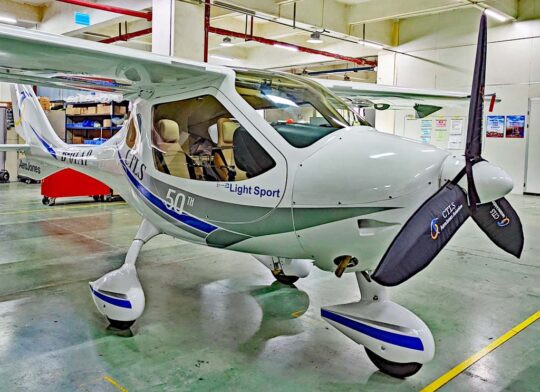 AeroJones has a patient investor with a longer horizon and the company has rewarded him by steadily increasing business.
While those developments continue, the Taiwan-owned company has clearly demonstrated their ability to build airplanes. A tour of AeroJones' production facility showed off a modern, orderly shop with well-trained personnel building CTLS aircraft.
AeroJones has a patient investor with a longer horizon and the company has rewarded him by steadily increasing business.
While those developments continue, the Taiwan-owned company has clearly demonstrated their ability to build airplanes. A tour of AeroJones' production facility showed off a modern, orderly shop with well-trained personnel building CTLS aircraft.
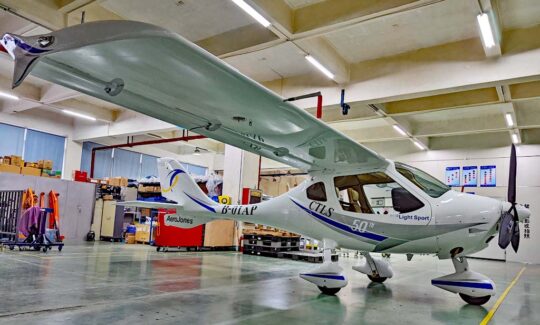 AeroJones was established in 2013 and is completing its 10th year in business, a noteworthy accomplishment it will celebrate officially in 2023.
A decade ago, AeroJoes signed a contract with German CTLS developer Flight Design. After receiving extensive training from company engineers, AeroJones turned on their factory machinery. Gaining government approval — a kind of Type Certificate is required by CAAC, China's FAA — took many months. This was all new ground for both company and officials.
AeroJones was established in 2013 and is completing its 10th year in business, a noteworthy accomplishment it will celebrate officially in 2023.
A decade ago, AeroJoes signed a contract with German CTLS developer Flight Design. After receiving extensive training from company engineers, AeroJones turned on their factory machinery. Gaining government approval — a kind of Type Certificate is required by CAAC, China's FAA — took many months. This was all new ground for both company and officials.
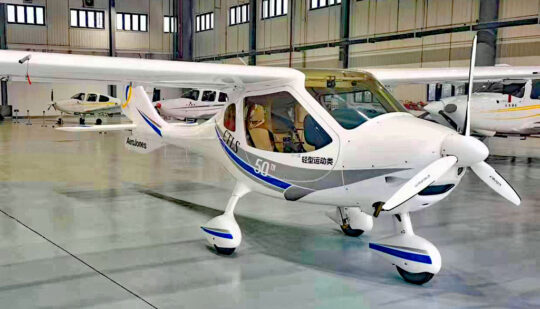 In those ten years, the AeroJones team learned to build a high-quality Light-Sport Aircraft and do so with repeatability. The company recently completed its #50 CTLS.
"We are #2 in China and #1 in the World," said Hsieh "Tai" Chi-Tai in news last year. Another China producer, Sunward with its
In those ten years, the AeroJones team learned to build a high-quality Light-Sport Aircraft and do so with repeatability. The company recently completed its #50 CTLS.
"We are #2 in China and #1 in the World," said Hsieh "Tai" Chi-Tai in news last year. Another China producer, Sunward with its 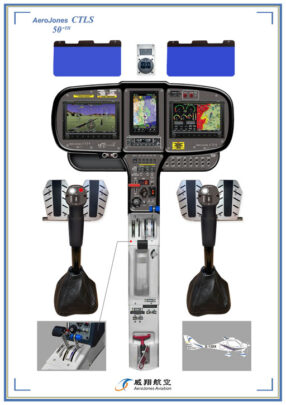 Like all such producers, AeroJones does their primary assembly work using non-airport facilities. They then disassemble, transport, and reassemble their aircraft at an airport some hours away. At that location, training is conducted and newly-manufactured aircraft are test flown.
Like all such producers, AeroJones does their primary assembly work using non-airport facilities. They then disassemble, transport, and reassemble their aircraft at an airport some hours away. At that location, training is conducted and newly-manufactured aircraft are test flown.
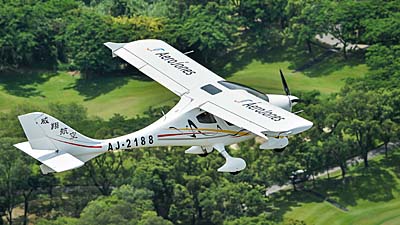 Until recently, that is the method used to deliver all light aircraft in China. It's a large country and truck delivery adds a lot of extra work and time.
Last year. AeroJones broke new ground and air-ferry-delivered a new CTLSi to a customer (
Until recently, that is the method used to deliver all light aircraft in China. It's a large country and truck delivery adds a lot of extra work and time.
Last year. AeroJones broke new ground and air-ferry-delivered a new CTLSi to a customer (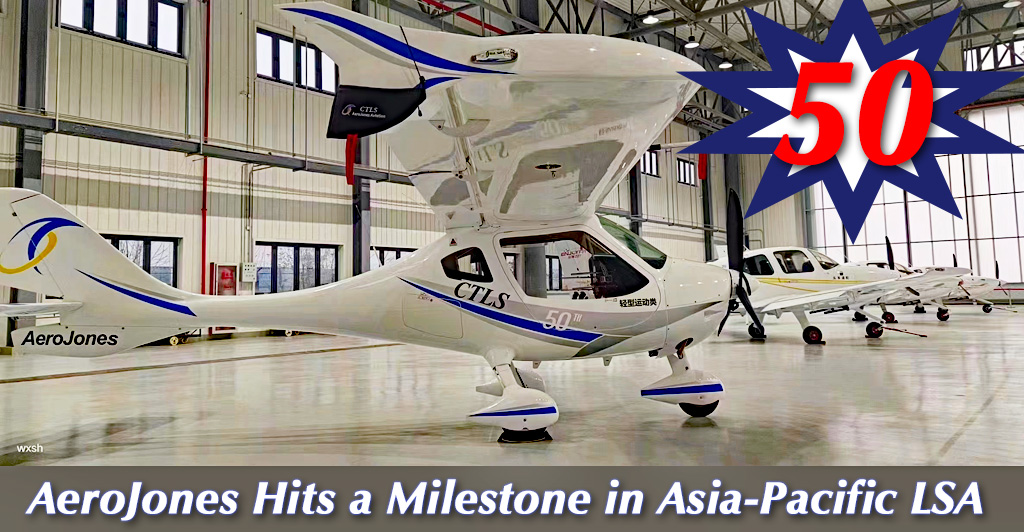
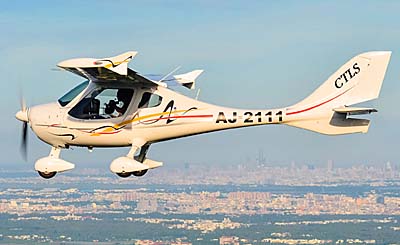 Yes, those of us in countries where private aviation is well-established take for granted the privilege of flying cross country. In fact, it’s one of the great joys we love to experience. It's a fantastic way to see the country. That’s simply doesn't happen in China. …Or, it didn't. Things are changing and one company has forged ahead despite the challenges.
This story involves a Taiwanese-origin, China-based company called AeroJones and involves the delivery of one of their CTLS aircraft to a customer. In the USA, this would never be news. In China, it most definitely is!
Yes, those of us in countries where private aviation is well-established take for granted the privilege of flying cross country. In fact, it’s one of the great joys we love to experience. It's a fantastic way to see the country. That’s simply doesn't happen in China. …Or, it didn't. Things are changing and one company has forged ahead despite the challenges.
This story involves a Taiwanese-origin, China-based company called AeroJones and involves the delivery of one of their CTLS aircraft to a customer. In the USA, this would never be news. In China, it most definitely is!
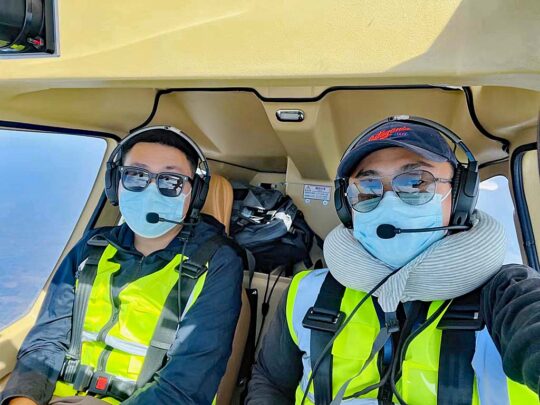
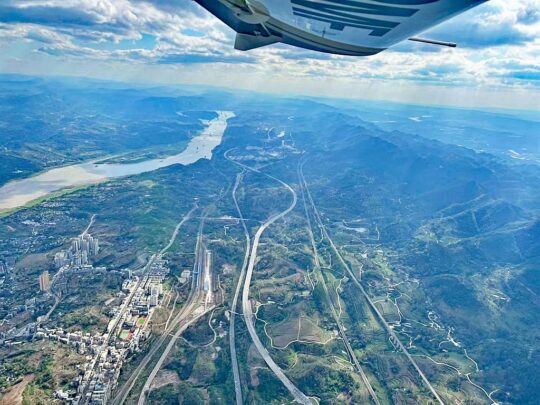
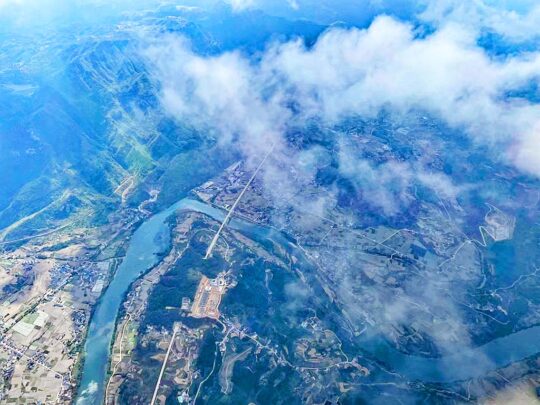
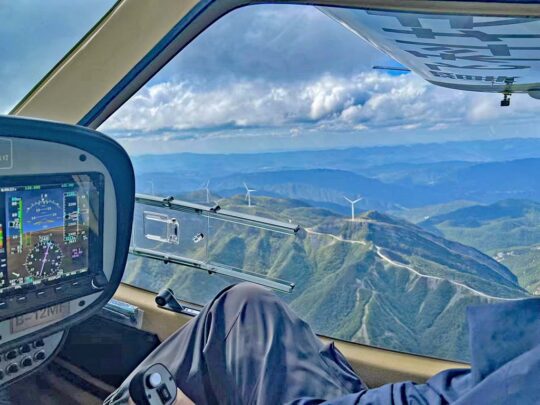
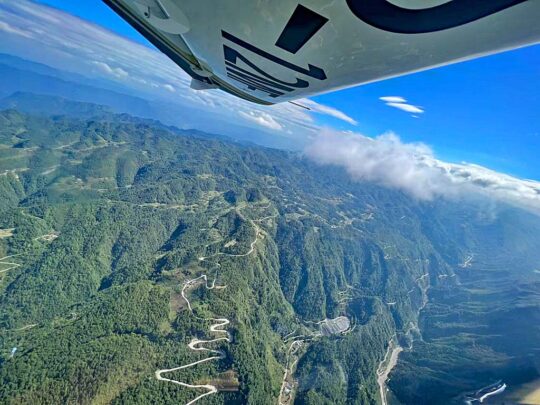
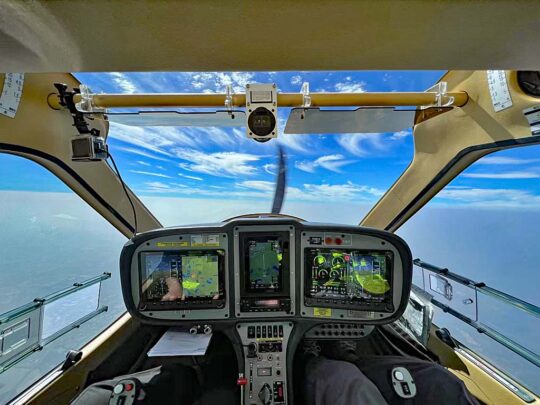
 This short video, although using a language few viewers may understand, offers glimpses of flying over China. From a Light-Sport Aircraft, these are very rare scenes. Aircraft other than military and airline simply don't get permission for cross country flights… but things are changing. Enjoy the views, compliments of AeroJones.
https://youtu.be/EzAFrDB_dHQ
This short video, although using a language few viewers may understand, offers glimpses of flying over China. From a Light-Sport Aircraft, these are very rare scenes. Aircraft other than military and airline simply don't get permission for cross country flights… but things are changing. Enjoy the views, compliments of AeroJones.
https://youtu.be/EzAFrDB_dHQ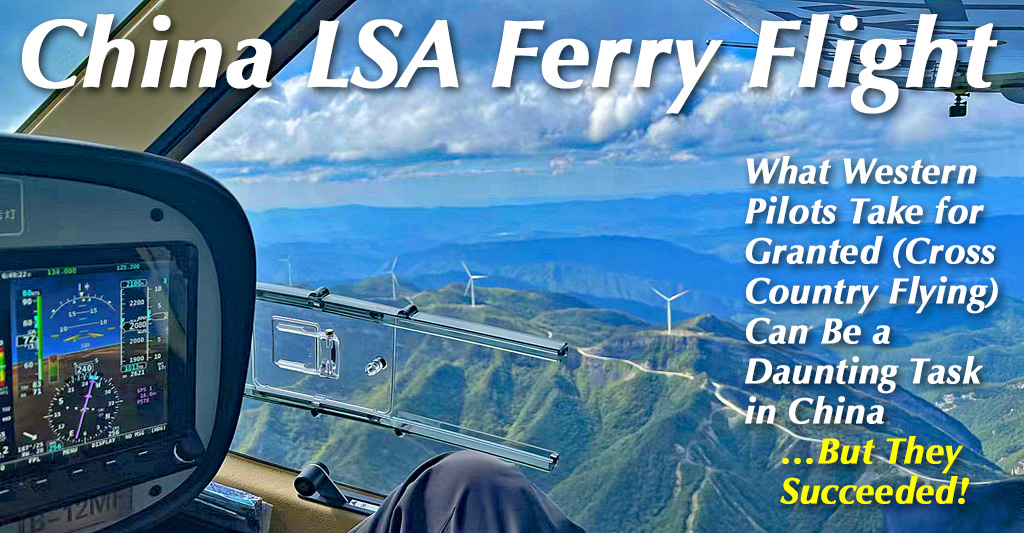
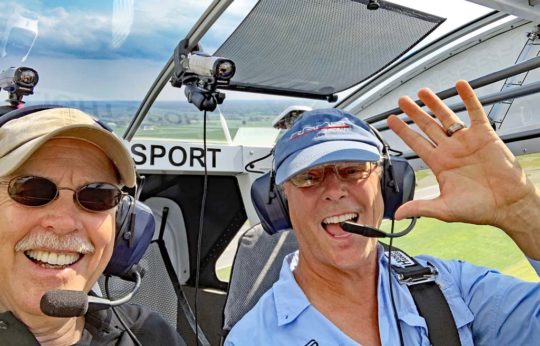 The Covid pandemic of 2020/2021 appears not to have slowed enjoyment of flying for fun… for most of us anyway. I sincerely regret anyone who suffered during this period but sport aviation has held up surprisingly well.
In this article, I will tackle a couple reader questions, the sort I hear all the time. To answer several people with one response, I asked reader John Joyce if I could use his question and name. He consented, so here we go…
The Covid pandemic of 2020/2021 appears not to have slowed enjoyment of flying for fun… for most of us anyway. I sincerely regret anyone who suffered during this period but sport aviation has held up surprisingly well.
In this article, I will tackle a couple reader questions, the sort I hear all the time. To answer several people with one response, I asked reader John Joyce if I could use his question and name. He consented, so here we go…
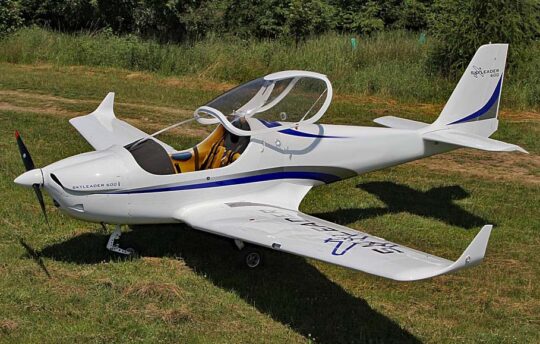 "By way of example," John continued, "there are nearly 300 SportCruisers registered in the US, as well as nearly 350 Flight Design models, but only 3 Skyleaders. I’m not picking on Skyleader; there are many manufacturers with just two, five or 20 registrations in the database."
Matter of fact, our N-number database is another useful reference we offer. You can use the
"By way of example," John continued, "there are nearly 300 SportCruisers registered in the US, as well as nearly 350 Flight Design models, but only 3 Skyleaders. I’m not picking on Skyleader; there are many manufacturers with just two, five or 20 registrations in the database."
Matter of fact, our N-number database is another useful reference we offer. You can use the 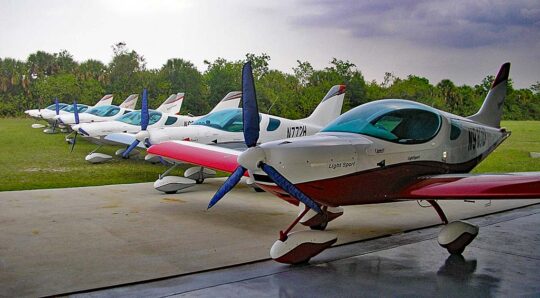
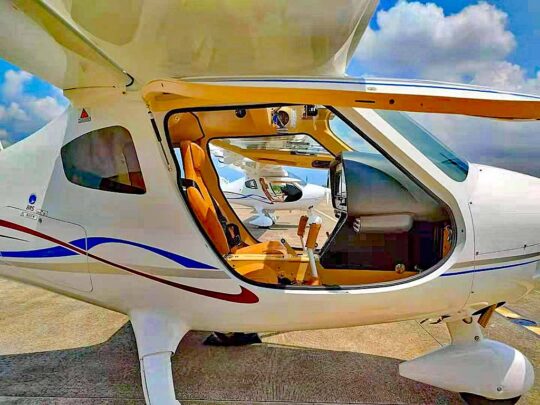
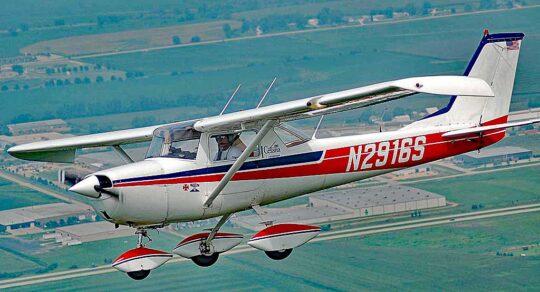
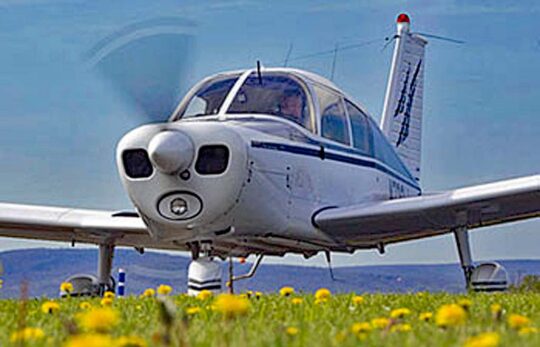
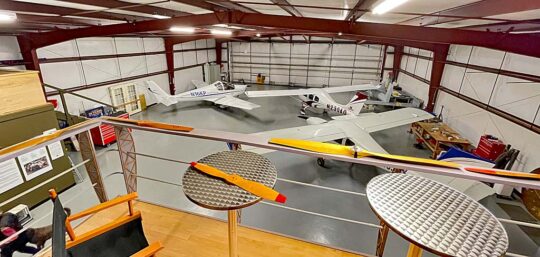
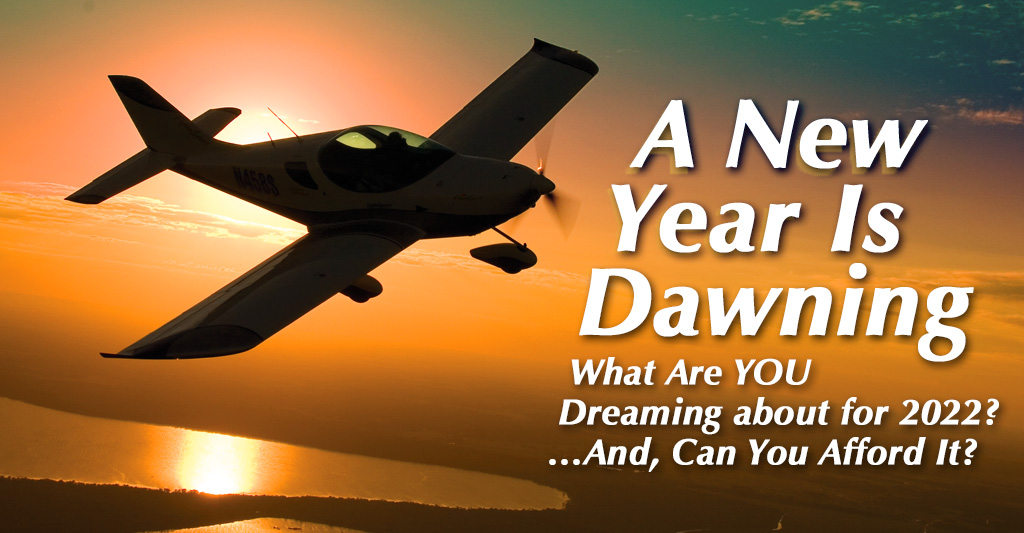
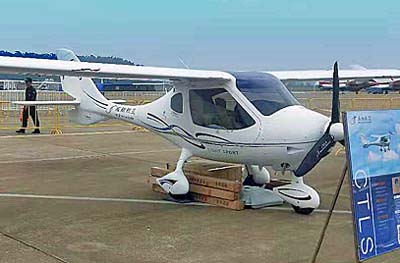 At a major show in China called Zhuhai visitors saw something: a new 6-axis LSA flight simulator. The developer is
At a major show in China called Zhuhai visitors saw something: a new 6-axis LSA flight simulator. The developer is 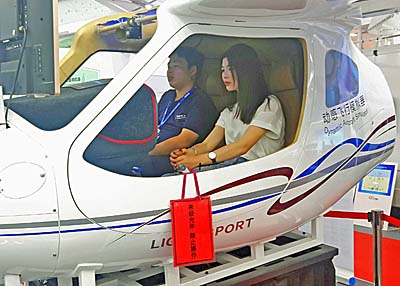 Chinese citizens play games, including flight simulators, as much as (or perhaps even more than) Americans do. Sitting at their computer or using a mobile smartphone or tablet is commonplace.
They know this activity and it may provide a bridge to people going aloft in an actual airplane like CTLS.
Imagine if you had never, ever seen a small plane of any kind. Would you rush to fly it? It's hard for Americans to envision this situation as we have small airplanes everywhere and airports in nearly every town in the nation.
AeroJones may truly be on to something developing their full-motion simulator.
“At the Zhuhai Airshow 2018, our AeroJones 6-axis of motion CTLS simulator was shown for the first time to the public,” said Michael Chou, who handles marketing for the company. He reported that reception to the new simulator was very enthusiastic.
Chinese citizens play games, including flight simulators, as much as (or perhaps even more than) Americans do. Sitting at their computer or using a mobile smartphone or tablet is commonplace.
They know this activity and it may provide a bridge to people going aloft in an actual airplane like CTLS.
Imagine if you had never, ever seen a small plane of any kind. Would you rush to fly it? It's hard for Americans to envision this situation as we have small airplanes everywhere and airports in nearly every town in the nation.
AeroJones may truly be on to something developing their full-motion simulator.
“At the Zhuhai Airshow 2018, our AeroJones 6-axis of motion CTLS simulator was shown for the first time to the public,” said Michael Chou, who handles marketing for the company. He reported that reception to the new simulator was very enthusiastic.
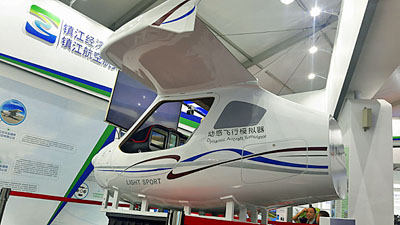
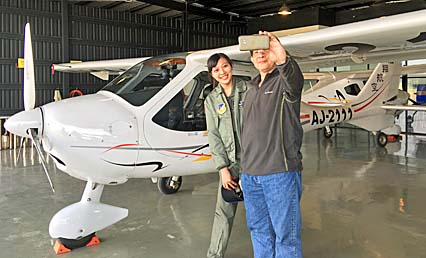 AeroJones is deep into planning for their new aircraft factory in Zhenjiang, China — where, presumably, they will also build the simulator. With the new facility, all manufacturing steps will be easier, less costly, and much more efficient, which will contribute to better values for customers buying the CTLS. Flight schools or other buyers of the modern and sophisticated CTLS will be able to fly to Dalu General Airport to see the factory and take demonstrations flights to confirm their purchase.
At the time the new factory was announced, Mr. Jones Chen said, “We are very pleased about the relationship with leaders of Zhenjiang. We look forward to a long and prosperous relationship."
AeroJones is deep into planning for their new aircraft factory in Zhenjiang, China — where, presumably, they will also build the simulator. With the new facility, all manufacturing steps will be easier, less costly, and much more efficient, which will contribute to better values for customers buying the CTLS. Flight schools or other buyers of the modern and sophisticated CTLS will be able to fly to Dalu General Airport to see the factory and take demonstrations flights to confirm their purchase.
At the time the new factory was announced, Mr. Jones Chen said, “We are very pleased about the relationship with leaders of Zhenjiang. We look forward to a long and prosperous relationship."
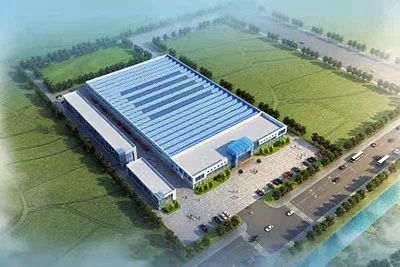
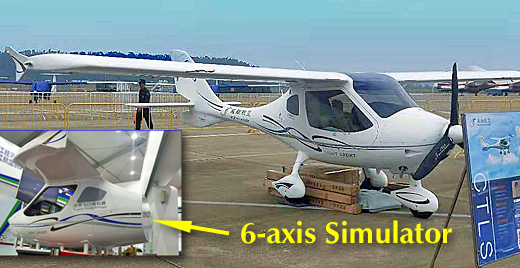
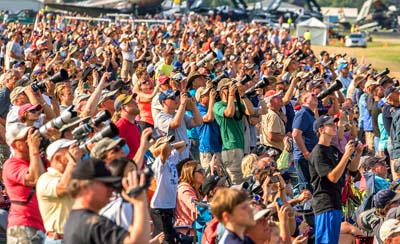
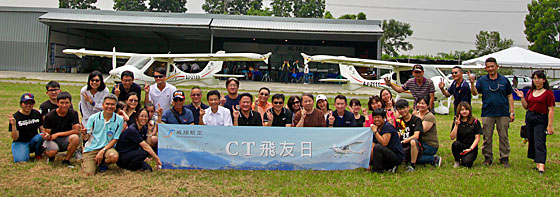 Let me tell you about a specific brand fly-in, for the CTLS produced in China. While small compared to big American events, this was a healthy start. If aviation is to grow in Asia-Pacific, I think events like that hosted by manufacturer AeroJones are key. More of them is needed but here is a worthy start.
In May 2018, AeroJones Aviation hosted a first-time event at their training facility in the south of Taiwan, called Pingtong Saijiain Airport. AeroJones Aviation is the manufacturer of the sophisticated light aircraft called CTLS. The aircraft factory is located in Xiamen, China.
Let me tell you about a specific brand fly-in, for the CTLS produced in China. While small compared to big American events, this was a healthy start. If aviation is to grow in Asia-Pacific, I think events like that hosted by manufacturer AeroJones are key. More of them is needed but here is a worthy start.
In May 2018, AeroJones Aviation hosted a first-time event at their training facility in the south of Taiwan, called Pingtong Saijiain Airport. AeroJones Aviation is the manufacturer of the sophisticated light aircraft called CTLS. The aircraft factory is located in Xiamen, China.
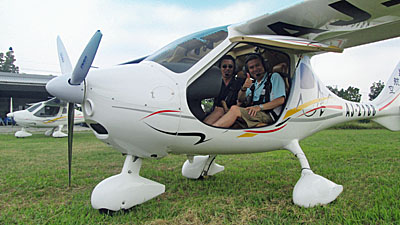 “As promised,
“As promised, 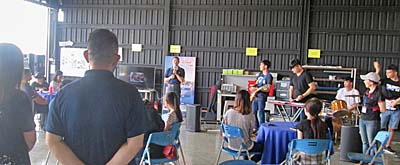 Events like the one AeroJones hosted may be critically important to introduce literally billions of people in the Asian-Pacific region to the idea of flying for fun.
“We were pleased with this first event and the number of people who came to help launch this new idea,” observed Mr. Hsieh Chi-Tai, General Aviation Development Vice President for AeroJones. “Even CT owners that could not fly their aircraft to Pingtong still showed their enthusiasm of flying.” He believes this type of activity will grow as AeroJones Aviation is able to replicate their flight school and pilots club across China in the years ahead.
AeroJones acquired the rights to manufacture the German CTLS aircraft design. The company has since secured approval from the government to build and sell these LSA. China is predicted to become a major market for Light-Sport Aircraft.
Events like the one AeroJones hosted may be critically important to introduce literally billions of people in the Asian-Pacific region to the idea of flying for fun.
“We were pleased with this first event and the number of people who came to help launch this new idea,” observed Mr. Hsieh Chi-Tai, General Aviation Development Vice President for AeroJones. “Even CT owners that could not fly their aircraft to Pingtong still showed their enthusiasm of flying.” He believes this type of activity will grow as AeroJones Aviation is able to replicate their flight school and pilots club across China in the years ahead.
AeroJones acquired the rights to manufacture the German CTLS aircraft design. The company has since secured approval from the government to build and sell these LSA. China is predicted to become a major market for Light-Sport Aircraft.
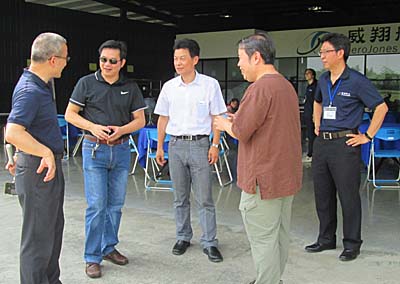 In addition to China and Taiwan, AeroJones Aviation is able to ship fully manufactured CTLS aircraft to other Asia-Pacific countries including Australia, New Zealand, Indonesia, Malaysia, Philippines, Japan, Korea, and Thailand.
Many aviation experts believe China could see rapid growth for aircraft of this type given plans from the central government in China to build hundreds of new airports during the next few years. The Air Sports Federation of China is also planning hundreds of "flying camps" where citizens can learn more about and experience aviation. ASFC personnel attended Oshkosh 2018 and met with groups to learn more about how to pursue their plans.
The Xiamen, China base of AeroJones Aviation includes a manufacturing facility with full fabrication capability. More than 50 highly-trained workers build nearly every part of the airplane in Xiamen. As China may nurture entry level aviation, AeroJones appears destined to be apart of it.
In addition to China and Taiwan, AeroJones Aviation is able to ship fully manufactured CTLS aircraft to other Asia-Pacific countries including Australia, New Zealand, Indonesia, Malaysia, Philippines, Japan, Korea, and Thailand.
Many aviation experts believe China could see rapid growth for aircraft of this type given plans from the central government in China to build hundreds of new airports during the next few years. The Air Sports Federation of China is also planning hundreds of "flying camps" where citizens can learn more about and experience aviation. ASFC personnel attended Oshkosh 2018 and met with groups to learn more about how to pursue their plans.
The Xiamen, China base of AeroJones Aviation includes a manufacturing facility with full fabrication capability. More than 50 highly-trained workers build nearly every part of the airplane in Xiamen. As China may nurture entry level aviation, AeroJones appears destined to be apart of it.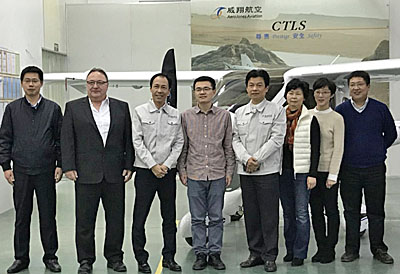
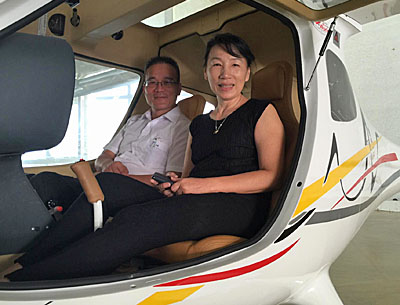
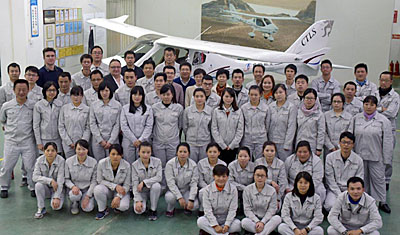
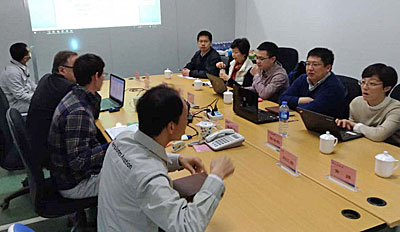
 This website and
This website and 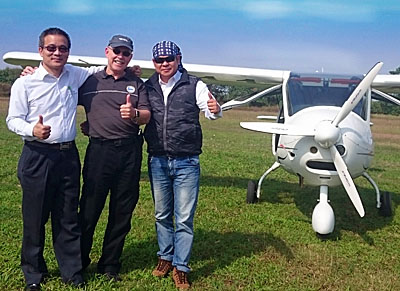 The final result proved fairly watchable, generating around 2,500 views so far.
Since others seemed to like it, I thought I'd share it here. It's seven minutes long and compresses a week's travel into a short window. I hope you might enjoy it.
The purpose was to try to assist sport and recreational aviation in China and I think we did some good. You may not care but the manufacturer of your favorite airplane probably does. As I've said before, a bigger market for the maker of your aircraft brand means they can be more stable financially and could generate more income to allow them to improve current models and design new aircraft.
That's good for everyone!
https://youtu.be/pZOqhEU-Seo
The final result proved fairly watchable, generating around 2,500 views so far.
Since others seemed to like it, I thought I'd share it here. It's seven minutes long and compresses a week's travel into a short window. I hope you might enjoy it.
The purpose was to try to assist sport and recreational aviation in China and I think we did some good. You may not care but the manufacturer of your favorite airplane probably does. As I've said before, a bigger market for the maker of your aircraft brand means they can be more stable financially and could generate more income to allow them to improve current models and design new aircraft.
That's good for everyone!
https://youtu.be/pZOqhEU-Seo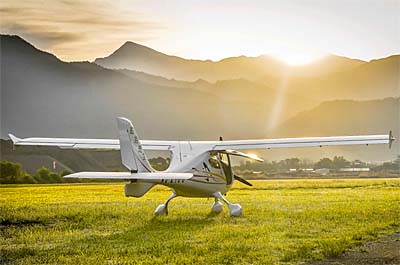 My guess is most readers do not care particularly about recreational aviation or sport flying in China. After speaking to many pilots at airshows, I know Americans are somewhat aware of flying in other nations but we enjoy so much freedom to fly in the USA and we have so many choices of aircraft, airports, and flying gear that the rest of the world seems almost irrelevant.
We most definitely are the lucky ones. We can and do take for granted the idea of hopping in your airplane — whether ultralight, LSA, or a speedy four passenger GA aircraft — and flying to a pancake breakfast or for one of those $100 hamburgers. We can fly almost anywhere we want, anytime we choose, for hour after hour if we like. Sure, some airspace is closed to us or perhaps too congested but, by and large, we can do what we want in the air. I love it. You love it. People in other countries want to love it.
My guess is most readers do not care particularly about recreational aviation or sport flying in China. After speaking to many pilots at airshows, I know Americans are somewhat aware of flying in other nations but we enjoy so much freedom to fly in the USA and we have so many choices of aircraft, airports, and flying gear that the rest of the world seems almost irrelevant.
We most definitely are the lucky ones. We can and do take for granted the idea of hopping in your airplane — whether ultralight, LSA, or a speedy four passenger GA aircraft — and flying to a pancake breakfast or for one of those $100 hamburgers. We can fly almost anywhere we want, anytime we choose, for hour after hour if we like. Sure, some airspace is closed to us or perhaps too congested but, by and large, we can do what we want in the air. I love it. You love it. People in other countries want to love it.
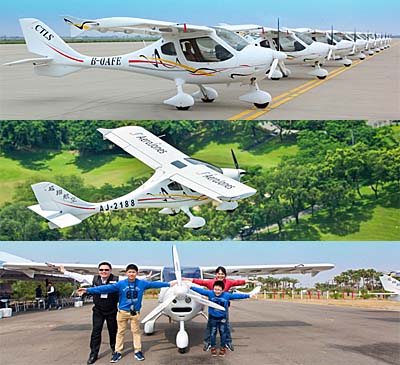
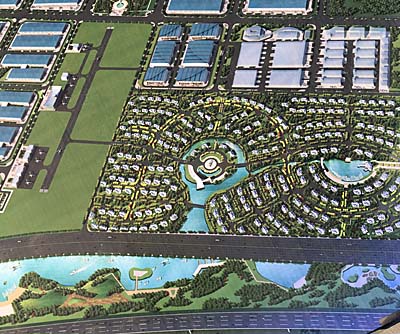 I have zero doubt China can build the airports. It is perfectly obvious this industrious country can build anything — literally anything — they want. I've never seen so many construction cranes and this is true nearly everywhere you look.
In the central city of Anyang, billing itself as the sport flying capital of China, I toured a massive construction development. It will include the usual collection of very large buildings complete with a handsome new airport and runway but also an airport flying community, roughly imitating the one in which I live:
I have zero doubt China can build the airports. It is perfectly obvious this industrious country can build anything — literally anything — they want. I've never seen so many construction cranes and this is true nearly everywhere you look.
In the central city of Anyang, billing itself as the sport flying capital of China, I toured a massive construction development. It will include the usual collection of very large buildings complete with a handsome new airport and runway but also an airport flying community, roughly imitating the one in which I live: 